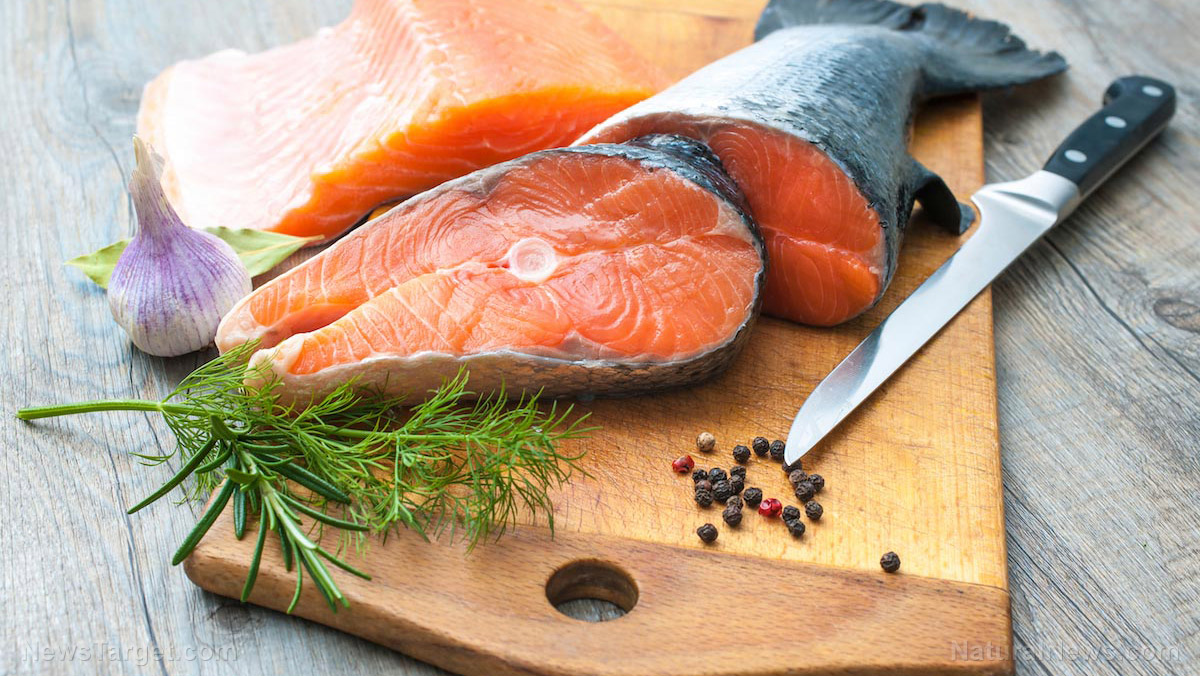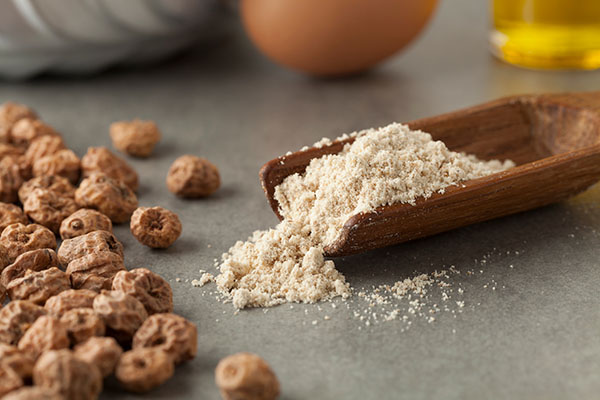
Advertisement
Omega-3 fatty acids are crucial for your overall well-being. Consuming foods rich in omega-3s, like mackerel, salmon and nuts, can help improve your brain, eye and mental health. Superfoods that contain omega-3s can even help relieve pain, and they offer anti-inflammatory benefits!
Science-based health benefits of omega-3s
Below are some of the scientifically proven benefits of eating foods rich in omega-3s.
Omega-3s can help boost bone and joint health.
Osteoporosis and arthritis are two common disorders that affect the skeletal system. Studies have shown that omega-3s can improve bone strength by boosting the amount of calcium in your bones. This in turn helps lower osteoporosis risk.
Omega-3s can also help treat arthritis. In one study, researchers have found that participants who took omega-3 supplements reported reduced joint pain and increased grip strength.
Omega-3s may help address depression and anxiety.
Depression, one of the most common mental health conditions in the world, includes symptoms like sadness, lethargy and a general loss of interest in life. Meanwhile, anxiety, another common disorder, causes symptoms like constant worry and nervousness.
Research suggests that people who consume omega-3s regularly are less likely to be depressed. If you already have depression or anxiety, taking omega-3 supplements may help improve your symptoms.
There are three types of omega-3 fatty acids: alpha-linolenic acid (ALA), eicosapentaenoic acid (EPA) and docosahexaenoic acid (DHA). ALA is usually found in plant oils such as flaxseed and soybean oil.
On the other hand, DHA and EPA are found in fatty fish and other seafood. Out of these three types, researchers believe EPA is the best at fighting depression. A study suggests that EPA may be as effective against depression as a common antidepressant drug.
Omega-3s may help prevent age-related mental decline and Alzheimer’s disease
Aging is linked to a decline in brain function. According to several studies, higher omega-3 intake is associated with decreased age-related mental decline and a lower risk of Alzheimer’s disease.
A review of controlled studies has found that omega-3 supplements are most effective when taking at disease onset when the symptoms of Alzheimer’s are very mild.
Omega-3s can help relieve menstrual pain
Menstrual pain often affects a woman’s lower abdomen and pelvis, with pain that tends to radiate down to the lower back and thighs. The pain also often affects quality of life.
Thankfully, studies have shown that women who consume the most omega-3s have milder menstrual pain. Ladies, rejoice!
Another study also suggests that an omega-3 supplement was more effective than ibuprofen, an anti-inflammatory drug, in treating severe pain during menstruation.
12 Superfoods rich in omega-3s
Experts suggest a minimum of 250 to 500 mg of omega-3s per day for healthy adults. Make superfoods rich in omega-3 fatty acids a part of your regular diet to boost your brain and overall health.
Below are 12 delicious foods that are naturally rich in omega-3.
Mackerel
Mackerel are small, fatty fish that is usually smoked and eaten as whole fillets in Western countries.
Mackerel are nutrient-rich. One piece of salted mackerel contains 4,107 mg of omega-3s or 5,134 mg per 3.5 ounces (100 grams).
The same serving contains 200 percent of the Reference Daily Intake (RDI) for vitamin B12 and 100 percent for selenium!
Salmon (4,123 mg per serving)
Salmon is one of the most nutritious superfoods and it contains high-quality protein, along with many nutrients, such as selenium, large amounts of vitamin D and B vitamins.
A fillet of cooked, farmed Atlantic salmon contains 4,123 mg of omega-3s or 2,260 mg in 3.5 ounces.
Research has found that people who regularly eat fatty fish, like salmon, have a lower risk of conditions like dementia, depression and heart disease.
Cod liver oil
While cod liver oil is more of a supplement than a food, it’s a vitamin-rich supplement. One tablespoon of cod liver oil contains 2,682 mg of omega-3s.
Cod liver oil also contains vitamins D and A. One tablespoon provides 170 percent and 453 percent of the RDIs, respectively.
Don’t take more than one tablespoon of cod liver oil at a time since too much vitamin A may have adverse effects.
Herring
Herring, a medium-sized, oily fish, is usually cold-smoked, pickled, or precooked. Herring is also sold as a canned snack.
In England, smoked herring is called kippers. The fish is eaten as a breakfast food and served with eggs.
A medium fillet (40 grams) of kippered Atlantic herring contains 946 mg of omega-3s or 2,366 mg per 3.5 ounces.
A standard smoked fillet contains almost 100 percent of the RDI for vitamin D and selenium and 221 percent of the RDI for vitamin B12.
Oysters
Shellfish are some of the most nutritious superfoods. If you can get past the unusual smell, taste and texture of oysters, you have access to a food that contains more zinc than any other food.
Six raw eastern oysters (3 ounces or 85 grams) contains 370 mg of omega-3s or 435 mg per 3.5 ounces. The same serving also offers 293 percent of the RDI for zinc, 70 percent for copper, and 575 percent for vitamin B12.
Considered a delicacy in many countries, raw oysters can be eaten as an appetizer, a snack, or a whole meal.

Sardines
Sardines are very small, oily fish. They’re often served as a starter, snack, or delicacy.
When eaten whole, sardines contain almost every essential nutrient you need. A cup (149 grams) of canned Atlantic sardines contains 2,205 mg of omega-3s or 1,480 mg per 3.5 ounces.
Meanwhile, 3.5 ounces of drained sardines provide over 200 percent of the RDI for vitamin B12, 24 percent for vitamin D and 96 percent for selenium.
Anchovies
Anchovies are tiny, oily fish. You can buy either dried or canned anchovies.
Often consumed in very small portions, anchovies can be rolled around salty capers, stuffed in olives, or used as pizza and salad toppings.
Anchovies have a strong taste and they are also used to flavor many dishes and sauces like Caesar dressing, remoulade and Worcestershire sauce.
A two-ounce can of European anchovies contains 951 mg of omega-3s or 2,113 mg per 3.5 ounces. They’re also full of niacin and selenium, while boned anchovies contain calcium.
Caviar
Caviar consists of roe or fish eggs. Often considered a luxurious food item, caviar is commonly used in small quantities as a starter, taster, or garnish.
One tablespoon (14.3 grams) of caviar contains 1,086 mg of omega-3s or 6,786 mg per 3.5 ounces. Additionally, caviar is full of choline.
Flaxseeds
Tiny brown or yellow flaxseeds are often ground, milled, or used to make oil.
Flaxseeds are one of the richest whole-food sources of the omega-3 ALA and flaxseed oil is often used as an omega-3 supplement.
A tablespoon (10.3 grams) of whole seeds contains 2,350 mg of omega-3s or 7,260 mg per tablespoon (13.6 grams) of oil.
Flaxseeds are also chock-full of fiber, magnesium and other nutrients. Unlike other oily plant seeds, flaxseeds have a great omega-6 to omega-3 ratio.

Chia seeds
Chia seeds are nutrient-rich and they’re full of magnesium, manganese and selenium.
An ounce (28 grams) of chia seeds contains 5,060 mg of omega-3s. The same serving also contains five grams of protein and all eight essential amino acids.
Walnuts
Walnuts are fiber-rich and very nutritious. When eating walnuts, don’t remove the skin, which is full of walnuts’ phenol antioxidants that offer important health benefits.
One ounce (28 grams or about 14 walnut halves) of walnuts contains 2,570 mg of omega-3s. Walnuts are also rich in copper, manganese, vitamin E and other beneficial plant compounds.
Soybeans
Organic soybeans are full of fiber and vegetable protein. A 1/2 cup (47 grams) serving of dry roasted soybeans contains 670 mg of omega-3s or 1,443 mg per 3.5 ounces.
Organic soybeans are also full of other nutrients like folate, magnesium, potassium, riboflavin and vitamin K.
Note that soybeans are also full of omega-6 fatty acids. Experts suggest that consuming too much omega-6 may cause inflammation, so eat soy-based foods in moderation.
Other food sources of omega-s
The first eight superfoods in this list contain the omega-3 fats EPA and DHA, which are found in some animal foods, seafood and algae.
Meanwhile, the last four foods contain the omega-3 fat ALA, which is inferior to the other two.
Even though they don’t contain as much omega-3 as the foods above, these superfoods still contain decent amounts:
- Pastured eggs
- Omega-3-enriched eggs
- Meats and dairy products from grass-fed animals
- Hemp seeds
- Vegetables (E.g., Brussels sprouts, purslane and spinach)
Now that you know which superfoods are naturally rich in beneficial omega-3s, you can incorporate them into a healthy diet to boost your overall well-being and prevent inflammation and various diseases.
Sources:
Advertisements







